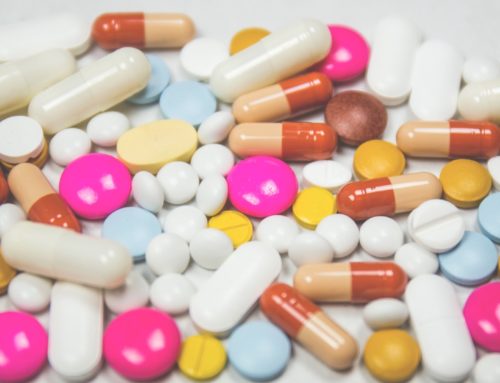The pH of the foods we eat is an important, yet oft-overlooked, aspect of leading a healthy lifestyle.
Why? Well because in order for you or I to be alive enough to be reading this article in the first place, our lungs and kidneys must work around the clock to sustain the pH of our blood somewhere between the precise numbers of 7.35 and 7.45 (1).
Then, depending on the types of foods that we’re eating day-to-day, our kidneys are then required to maintain an optimal pH level within the body by compensating (either more or less) to make up the difference produced by our diets.
What’s more is that when it comes to the pH of foods, certain categories can be deceiving. Lemons and limes, for example, are highly acidic fruits that when processed by the body actually contribute to an overall alkalizing effect.
This is due to something referred to as potential renal acid load (PRAL) which determines where on the scale of alkaline-acidic substances different foods fall, based on the net effect they have on your pH post-consumption — not the pH of the food itself (2).
In this sense, high-PRAL foods are considered to have an acidic effect on the over pH of the body, where low-PRAL foods have an alkalizing one.
And why exactly is it so crucial to know the difference?
Well, when we consume a high number of acidic foods and drinks on a routine basis, we create an environment within the body — and more specifically the gut — that increases our risk of chronic inflammation, and therefore our risk of disease.
It’s not just one type of disease that we become more susceptible to, either, but all different types, many of them responsible for the vast majority of mortalities in the West, such as ischemic heart disease, kidney diseases, cancer, stroke, type-2 diabetes, and non-alcoholic fatty liver (3).
“All told, inflammation is involved in at least 8 of the top 10 leading causes of death in the United States today,”
— Dr. Slavich.
This state of continuous pressure on the kidneys to compensate for a diet high in acidic foods is referred to as acidosis, and while your blood won’t actually undergo any changes in pH, the task of just keeping you alive can hugely disrupt enzyme function, loss of sensitivity towards insulin, and a range of cellular metabolic processes (4).
It’s not exactly an optimal way for the body to function — and this is where the 80/20 “rule” comes into play.
The “Rule” Of 80/20
The word rule is put into quotations here because when it comes to diet, there is no one-size-fits-all, and trying to impose strict regulations on any facet of the highly complex lives we each lead is often counter-productive.
While food and health do go hand in hand, it’s important to understand that any measure of overall health will also take into account an individual’s level of activity and exercise, quality of sleep, moderation of stress levels, and the maintenance of close and healthy relationships.
With that said, the research is clear in stating that individuals who consume mostly alkaline significantly reduce their likelihood of dying from preventable diseases. And based on the popularity of the 80/20 rule, aiming for a ratio of 80% alkaline-forming foods and 20% acid-forming foods is one that seems to be highly effective in the day-to-day application (5, 6, 7).
Check out How To Test Your pH With Purple Cabbage (And Pee) for an easy, at-home experiment with instant results.
Keep in mind that pH is a scale that runs from 1 to 14, with 7 being the neutral midpoint. Any substance with a pH of less than 7 is therefore considered to be more acidic, with numbers 7–14 representing the increasingly alkaline side of the scale.
However, as a result of the potential discrepancy between a food’s natural pH value and its net PRAL value (think of lemons and limes), knowing exactly which foods to focus on (80%) and which foods to avoid and limit (20%) can be a slightly less intuitive process than we might like.
Thankfully, this next section of the article is going to break it down.
The Good, The Bad, And The Neutral
In general, we can already take an educated guess at which foods are alkaline-promoting within the body, and which are the opposite, by considering to what extent they are generally regarded as being health-promoting or health-inhibiting.
For example:
- fresh fruits and vegetables
- anti-inflammatory herbs and spices such as turmeric, cumin, and cayenne
- raw nuts and seeds
- plant based proteins
VS
- coffee, sodas, and alcoholic drinks
- sugar/both natural and artificial sweeteners
- high sodium foods
- canned vegetables
- roasted nuts
- animal-based proteins
- most carbohydrates
Comparing the two bullet lists above, it makes sense why a diet consisting primarily of food and drinks featured on the lower list would result in an increased propensity for the development of chronic and/or fatal disease.
The reason why the 80/20 “rule” works so well, is because not all acid-forming foods need to be completely ruled out.
For instance, even with a pH of 4 that makes it over 1000 times more acidic than water, the regular consumption of coffee has been linked to overall protective effects in the body, such as a lower risk of breast, prostate, and pancreatic cancer, a decreased risk of suicide and depression, and a reduction in cognitive decline and associated disorders such as Parkinson’s and Alzheimer’s (8, 9, 10).
We also know that — while highly processed or refined carbohydrates ought to be avoided as much as possible — whole grains, despite also being acid-forming foods, offer a great source of fibre, providing a range of benefits for the overall maintenance of a healthy gut microbiome (11). (See The Importance Of A Healthy Microbiome (During A Pandemic!) And How To Build One for more information on the role fibre plays).
Looking at the list, it’s also safe to say that you could do a lot worse than making canned vegetables and a handful of roasted nuts your 20% acids for the day! What’s most important here is considering the nutritional value of the acid-forming foods you are choosing to eat, further to just the value of pH.
Sneaky Salt And Sulphuric Acid
This article would be wholly incomplete without addressing the primary sources of acid in the Standard American Diet.
Shockingly, over half of the average American’s net acidity levels can be directly attributed to sodium intake, but, perhaps even more surprising is where all this sodium is coming from (12)…
According to the U.S. Department of Health and Human Services, over 40% of the sodium we eat every day comes from only 10 different types of food: bread, pizza, sandwiches, deli meats, soups, burritos, savory snacks, chicken, cheese, and eggs (13).
In fact, natural chicken breast is known to contain anywhere between 200 and 500mg of sodium per serving, due to a common practice within the poultry industry known as plumping, whereby raw meat is injected with saltwater to improve the taste as well as raise the price per gram for consumers (14).
In general, all animal proteins have an acid-forming effect within the body that occurs when particular amino acids are metabolized to create sulphuric acid. When the kidneys are faced with continuously raised levels of sulphuric acid to deal with, they begin to take calcium from within our bones to use as a buffer (15).
This potentially explains why countries with the highest rates of dairy consumption are also the ones that present the highest rates of osteoporosis — i.e. weak and brittle bones characterized by a loss in overall bone density (16,17).
Indeed, the research strongly points towards the notion that adhering to a diet made mostly of plant-based proteins and high-alkaline foods is the best way to decrease the risk of preventable chronic disease.
By implementing a version of the 80/20 “rule” that is most compatible with your current lifestyle, you allow yourself the peace of mind that accompanies taking control of your health and long-term happiness, while leaving just enough room for the acids (talking about your morning cup of coffee) that you love most!
Alexandra Walker-Jones — February 2021
Text References:
- Osuna-Padilla, I. A., Leal-Escobar, G., Garza-García, C. A., & Rodríguez-Castellanos, F. E. (2019). Dietary Acid Load: Mechanisms and evidence of its health repercussions. Nefrología (English Edition), 39(4), 343–354.
- Osuna-Padilla, I. A., Leal-Escobar, G., Garza-García, C. A., & Rodríguez-Castellanos, F. E. (2019). Dietary Acid Load: Mechanisms and evidence of its health repercussions. Nefrología (English Edition), 39(4), 343–354.
- Furman, D., Campisi, J., Verdin, E., Carrera-Bastos, P., Targ, S., Franceschi, C., … & Slavich, G. M. (2019). Chronic inflammation in the etiology of disease across the life span. Nature medicine, 25(12), 1822–1832.
- Pizzorno J. (2015). Acidosis: An Old Idea Validated by New Research. Integrative medicine (Encinitas, Calif.), 14(1), 8–12.
- Schwalfenberg G. K. (2012). The alkaline diet: is there evidence that an alkaline pH diet benefits health?. Journal of environmental and public health, 2012, 727630. https://doi.org/10.1155/2012/727630
- Mousa HA. Health Effects of Alkaline Diet and Water, Reduction of Digestive-tract Bacterial Load, and Earthing. Altern Ther Health Med. 2016 Apr;22 Suppl 1:24–33. PMID: 27089527.
- Pizzorno J. (2015). Acidosis: An Old Idea Validated by New Research. Integrative medicine (Encinitas, Calif.), 14(1), 8–12.
- Yu X, Bao Z, Zou J, Dong J. Coffee consumption and risk of cancers: a meta-analysis of cohort studies. BMC Cancer. 2011 Mar 15;11:96. doi: 10.1186/1471–2407–11–96. PMID: 21406107; PMCID: PMC3066123.
- Wang L, Shen X, Wu Y, Zhang D. Coffee and caffeine consumption and depression: A meta-analysis of observational studies. Aust N Z J Psychiatry. 2016 Mar;50(3):228–42. doi: 10.1177/0004867415603131. Epub 2015 Sep 2. PMID: 26339067.
- Nehlig A. Effects of coffee/caffeine on brain health and disease: What should I tell my patients? Pract Neurol. 2016 Apr;16(2):89–95. doi: 10.1136/practneurol-2015–001162. Epub 2015 Dec 16. PMID: 26677204.
- Lappi J, Kolehmainen M, Mykkänen H, Poutanen K. Do large intestinal events explain the protective effects of whole grain foods against type 2 diabetes? Crit Rev Food Sci Nutr. 2013;53(6):631–40.
- Frassetto LA, Morris RC, Jr, Sebastian A. Dietary sodium chloride intake independently predicts the degree of hyperchloremic metabolic acidosis in healthy humans consuming a net acid-producing diet. Am J Physiol Renal Physiol. 2007;293(2):F521–F525.
- U.S. Department of Health and Human Services, U.S. Department of Agriculture. What We Eat in America Cdc-pdf[PDF-64K]External. NHANES 2013–2014. Agricultural Research Service Website.
- Beck, Melinda (5 May 2009). “The Fine Print: What’s Really in a Lot of ‘Healthy’ Foods”. Wall Street Journal. Retrieved 17 May 2019 — via www.wsj.com.
- Frassetto, L., Banerjee, T., Powe, N., & Sebastian, A. (2018). Acid Balance, Dietary Acid Load, and Bone Effects-A Controversial Subject. Nutrients, 10(4), 517. https://doi.org/10.3390/nu10040517
- Mahdi, A.A., Brown, R.B. & Razzaque, M.S. Osteoporosis in Populations with High Calcium Intake: Does Phosphate Toxicity Explain the Paradox?. Ind J Clin Biochem 30, 365–367 (2015). https://doi.org/10.1007/s12291-015-0524-y
- Sellmeyer DE, Stone KL, Sebastian A, Cummings SR. A high ratio of dietary animal to vegetable protein increases the rate of bone loss and the risk of fracture in postmenopausal women. Study of Osteoporotic Fractures Research Group. Am J Clin Nutr. 2001;73(1):118–22.





